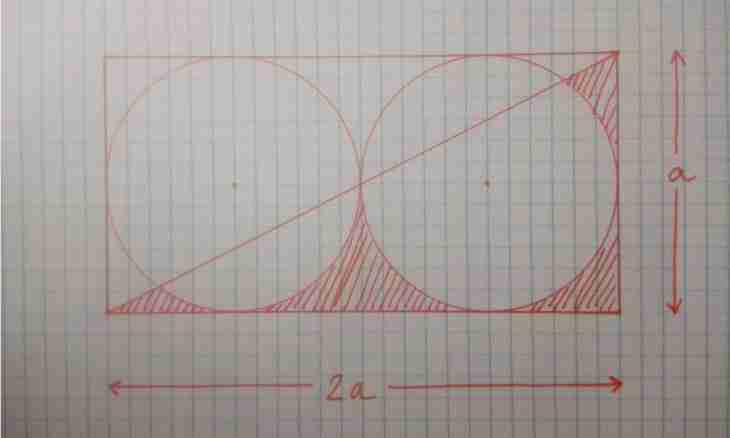Volume – the capacity measure expressed for geometrical figures as a formula V=l*b*h. Where l is length, b is width, h is object height. With only one or two characteristics it is impossible to calculate volume in most cases. However under some conditions it is obviously possible to make it through the area.
Instruction
1. The first task: to calculate volume, knowing height and the area. It is the simplest task since the area (S) - it the work also width are long (S = l*b), and volume – the work of length, width and height. Substitute in a formula of calculation of volume instead of l*b the area. You receive expression of V=S*h. Example: The area of one of the parties of a parallelepiped - 36 cm², height – 10 cm. Find parallelepiped.V volume = 36 cm² * 10 cm = 360 cm³.Ответ: The volume of a parallelepiped is equal to 360 cm³.
2. The second task: to calculate volume, knowing only the area. It is possible if you calculate cube volume, knowing the area of one of its sides. Since edges of a cube are equal, taking a square root from value of the area, you receive length of one edge. This length will be both height, and width. Example: the area of one side of a cube - 36 cm². Calculate volume. Take a square root from 36 cm². You received length – 6 cm. For a cube the formula will have an appearance: V = a³, where and – a cube edge. Or V = S*a where S is the area is one party, and – an edge (height) of a cube.V = 36 cm² * 6 cm = 216 cm³. Or V = 6³см = 216 cm³.Ответ: The volume of a cube is equal to 216 cm³.
3. The third task: to calculate volume if the area and some other conditions is known. Conditions can be different, besides the area other parameters can be known. Length or width can be equal to height, it is more or less than height several times. Also the additional information on figures which will help with calculations of volume can be supplied. Example 1: find prism volume if it is known that the area of one party of 60 cm², length of 10 cm, and height is equal to width.S = to l * to b; l = S: bl = 60 cm²: 10 cm = 6 cm – prism width. Since width is equal to height, calculate volume: V=l*b*hV = 10 cm * 6 cm * 6 cm = 360 cm³Ответ: the volume of a prism is 360 cm³
4. Example 2: find figure volume if the area of 28 cm², length of a figure of 7 cm. Additional condition: four parties are equal among themselves, and are connected with each other on width. For the decision it is necessary to construct a parallelepiped. l = S: bl = 28 cm²: 7 cm = 4 cm – the shirinakazhdy party represents a rectangle which length of 7 cm, and width of 4 cm. If to connect four such rectangles among themselves on width, then the parallelepiped will turn out. Length and width in it on 7 cm, and height of 4 cm are V = 7 cm * 7 cm * 4 cm = 196 cm³Ответ: Parallelepiped volume = 196 cm³.

